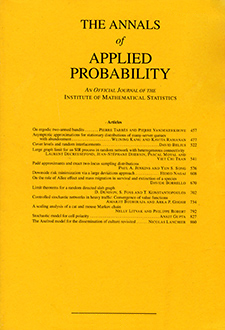Abstract
We study a system of random walks, known as the frog model, starting from a profile of independent Poisson(
Citation
Itai Benjamini. Luiz Renato Fontes. Jonathan Hermon. Fábio Prates Machado. "On an epidemic model on finite graphs." Ann. Appl. Probab. 30 (1) 208 - 258, February 2020. https://doi.org/10.1214/19-AAP1500
Information





